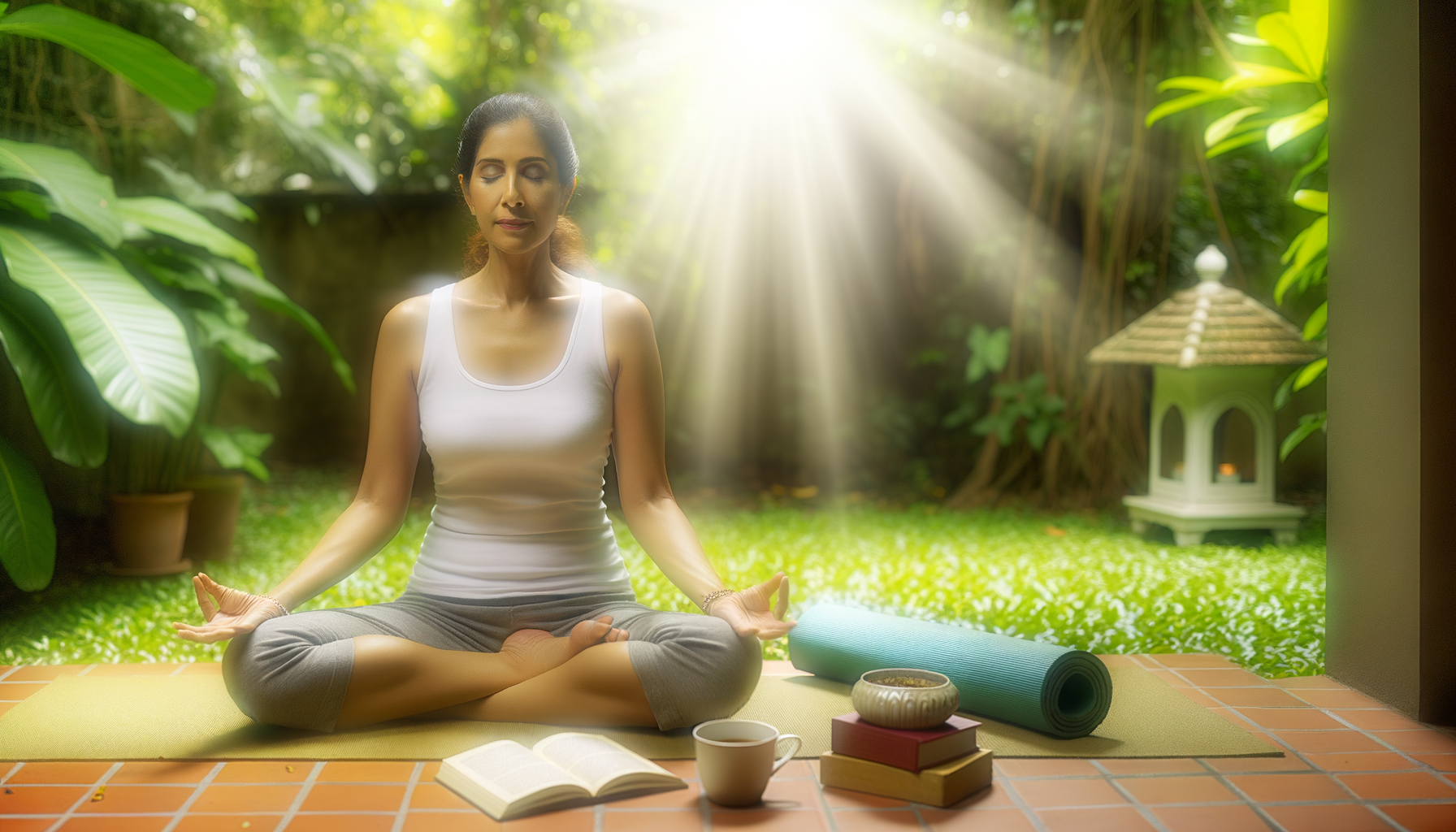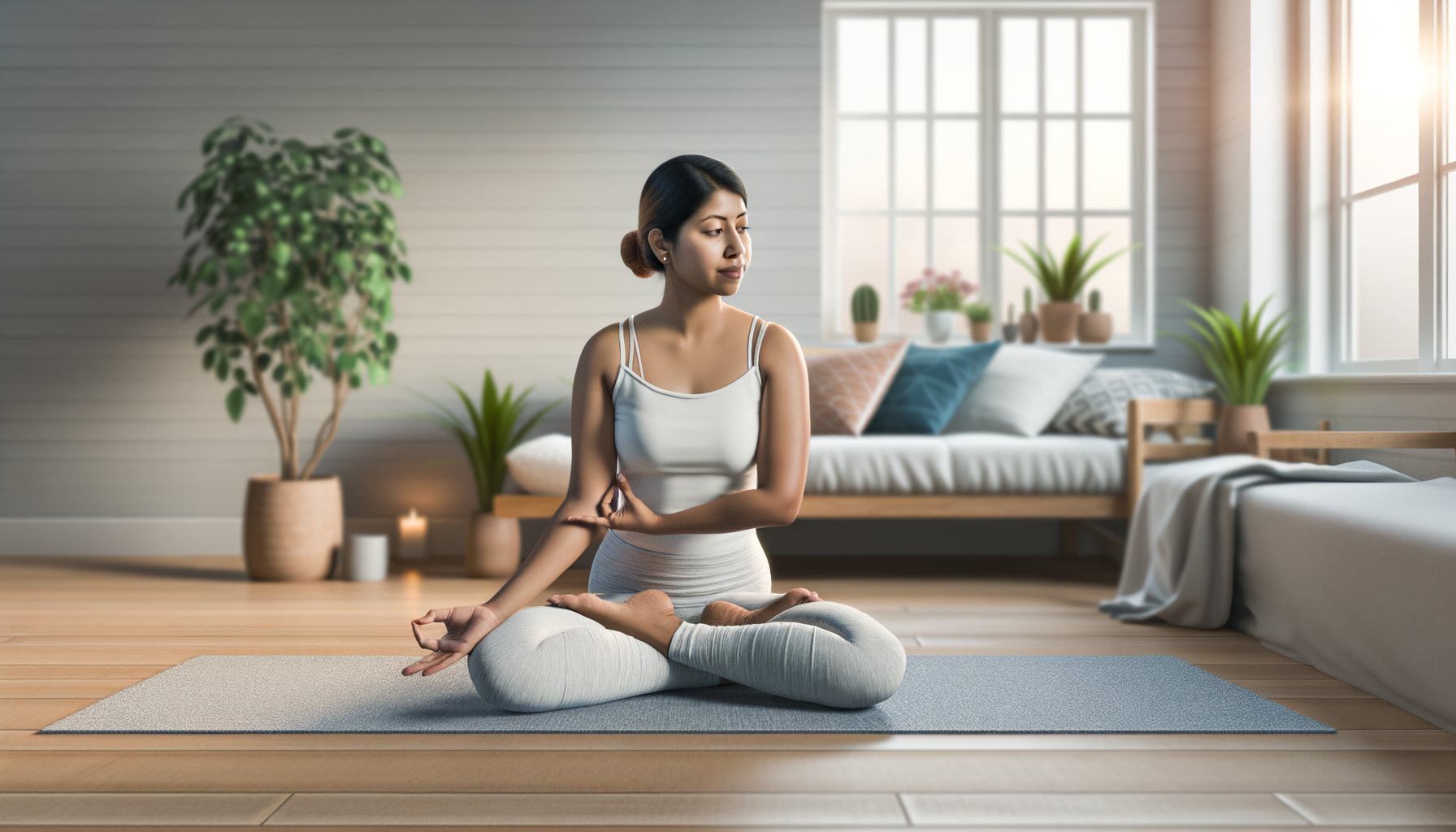
Introduction to Yoga
Defining Yoga: More Than Just Physical Postures
Yoga is often perceived as a series of intricate physical postures, but its essence extends far beyond the realm of mere exercise. It is a holistic discipline that integrates the body, mind, and spirit, aiming to achieve a state of harmony and balance. The Sanskrit root ‘Yuj’ signifies the union that yoga represents – the union of individual consciousness with universal consciousness, a harmonious connection that fosters a sense of oneness with all of existence.
The Origins of Yoga: A Brief History
The history of yoga is as rich and complex as the practice itself, with its origins tracing back over 5,000 years in northern India. The term ‘yoga’ first appears in the Rig Veda, one of the oldest known texts. The Vedic priests, who meticulously documented their practices and beliefs in the Vedas, used yoga as a means to transcend the limitations of the mind and to understand the divine. Over time, yoga’s methods and philosophies were refined and elaborated upon, particularly in the Upanishads and the Bhagavad Gita, which explore the inner workings of the mind and the path to enlightenment.
The Evolution of Yoga Through the Ages
From the ascetic practices of the Vedic priests to the classical framework laid out by Patanjali in the Yoga Sutras, yoga has undergone significant transformations. The development of Hatha Yoga brought the focus to physical postures and breath control, serving as a preparatory stage for meditation and spiritual awakening. Over the millennia, yoga has been shaped by various philosophical and religious movements, adapting to the needs and understandings of different eras while maintaining its core objective of spiritual growth.
Yoga’s Journey to the West
The late 19th and early 20th centuries marked a pivotal moment in yoga’s history as it began to spread to the Western world. Pioneers like Swami Vivekananda introduced yoga’s philosophical aspects, while later figures such as T. Krishnamacharya and his disciples popularized the physical practice of yoga. This journey to the West transformed yoga into a global phenomenon, leading to a diverse array of styles and interpretations.
The Significance of Yoga in Modern Times
In contemporary society, yoga has become a beacon of wellness, offering respite from the stresses of modern life. Its practices are now widely recognized for their physical benefits, such as increased flexibility and strength, as well as their mental health benefits, including stress reduction and improved concentration. Yoga’s adaptability has allowed it to thrive in various forms, from the serenity of meditative practices to the vigor of power yoga, making it accessible to people of all ages and backgrounds. As it continues to evolve, yoga remains a testament to the human quest for health, happiness, and deeper self-understanding.
Philosophical Foundations of Yoga
The Yoga Sutras of Patanjali
At the heart of yoga’s philosophical underpinnings are The Yoga Sutras of Patanjali, a collection of aphorisms that provide a framework for spiritual growth and mastery over the mind and emotions. Composed over 2,000 years ago, this seminal text outlines the art and science of yoga practice. Patanjali’s work is not about yoga as physical exercise, but rather about the mental discipline required to achieve a state of inner peace and liberation.
The Eight Limbs of Yoga
Patanjali’s Yoga Sutras introduce the concept of Ashtanga Yoga, commonly known as the Eight Limbs of Yoga. These steps serve as guidelines on how to live a meaningful and purposeful life. They are:
- Yama: Universal morality or ethical standards
- Niyama: Personal observances
- Asanas: Body postures
- Pranayama: Breathing exercises, and control of prana
- Pratyahara: Control of the senses
- Dharana: Concentration and cultivating inner perceptual awareness
- Dhyana: Devotion, Meditation on the Divine
- Samadhi: Union with the Divine
Key Philosophies: Non-Attachment, Karma, and Dharma
Central to yoga philosophy is the concept of non-attachment, or Vairagya, which teaches the importance of detaching from the material world and the ego. Karma refers to the law of cause and effect, where every action has an equal reaction, either immediately or at some point in the future. Dharma, on the other hand, is about right conduct and living one’s life in accordance with universal laws.
The Influence of Vedanta and Bhakti Movements
The Vedanta philosophy, which emerged from the teachings of the Upanishads, emphasizes the ultimate unity of all things and the presence of the divine in every being. It has significantly influenced the practice of yoga by highlighting the journey of self-discovery and the realization of one’s true nature. The Bhakti movement, which focuses on love and devotion towards a personal god, has also shaped yoga. It introduced the practice of devotional singing, chanting, and the importance of surrendering to a higher power, aspects that are still prevalent in many forms of yoga today.
Understanding these philosophical foundations is crucial for anyone seeking to deepen their practice beyond the physical postures of yoga. They offer a rich tapestry of wisdom that can transform not only one’s yoga practice but also one’s approach to life.
Traditional Schools and Styles of Yoga
Hatha Yoga: Balancing the Body and Mind
Hatha Yoga is often considered the foundation of the physical practices of yoga. It focuses on asanas (postures) and pranayama (breath control) to achieve a balance between the sun (ha) and moon (tha) energies within the body. This balance is thought to promote physical health and mental clarity. The ultimate goal of Hatha Yoga is to pave the way towards higher consciousness and self-realization. It is a path that begins with the body, leads to the mind, and ultimately to the spirit.
Raja Yoga: The Royal Path
Raja Yoga, also known as the “royal path,” is primarily concerned with the mind. Based on the Yoga Sutras of Patanjali, this school of yoga emphasizes the eight limbs of yoga as a roadmap to spiritual enlightenment. These limbs include ethical standards, self-discipline, posture, breath control, sensory withdrawal, concentration, meditation, and finally, samadhi, or a state of ecstasy and union with the divine. Raja Yoga is a comprehensive approach to self-discipline and meditation that is often considered the psychological approach to yoga.
Bhakti Yoga: The Path of Devotion
Bhakti Yoga is the path of devotion and love for the divine. It is a spiritual practice that uses emotion as its primary tool for connection. Practitioners of Bhakti Yoga engage in singing, chanting, and remembering the names and forms of the divine. This form of yoga is about cultivating a personal relationship with the divine, seeing the divine in all of creation, and serving others as manifestations of the divine. It is a heartfelt and surrendering path, leading to unity through love and devotion.
Jnana Yoga: The Path of Knowledge
Jnana Yoga is the yoga of wisdom and knowledge. It is considered the most direct, but also the most difficult path to spiritual liberation. Jnana Yoga uses the intellect as a tool to understand that our true Self is beyond our thoughts and mind. This path involves deep study, reflection, and meditation to achieve the realization of one’s true nature, which is pure consciousness. It is a path of self-inquiry and relentless pursuit of truth.
Karma Yoga: The Path of Selfless Service
Karma Yoga is the path of action or service. It teaches that the best way to reach spiritual enlightenment is through selfless actions performed without attachment to the outcome. Karma Yogis practice by dedicating their work to the divine and performing their duties with love and humility, as a form of worship. This path is about purifying the heart and counteracting the ego by serving others and seeing the unity of all life.
Yoga Practices and Techniques
Asanas: Yoga Postures and Their Benefits
The physical practice of yoga, known as asana, is perhaps the most recognizable aspect of yoga. Asanas are the postures that work to improve flexibility, strength, and balance. Beyond the physical, these postures are designed to prepare the body for meditation by reducing physical discomfort and enhancing concentration. Regular practice of asanas can lead to various health benefits, including improved circulation, better posture, and relief from stress and anxiety.
Pranayama: The Art of Breath Control
Pranayama is the yogic practice of controlling the breath, which is the source of our prana, or vital life force. By mastering the breath through various breathing techniques, one can influence the flow of prana in the body, leading to improved mental clarity, emotional stability, and physical health. Pranayama practices range from energizing breaths like Kapalabhati (Skull Shining Breath) to calming breaths like Ujjayi (Ocean Breath), each with its unique benefits.
Meditation and Mindfulness in Yoga
Meditation is a cornerstone of yoga, aiming to bring the mind to a state of tranquility and heightened awareness. Mindfulness, a form of meditation, involves paying deliberate attention to the present moment without judgment. Both practices can reduce stress, enhance emotional health, and improve concentration. They also serve as tools for exploring deeper levels of consciousness and connecting with the inner self.
Mantras and Chanting
Mantras are sacred sounds or phrases that have been used in yoga for thousands of years. Chanting these mantras can have a profound effect on the mind and body. The vibrations created during chanting can help to calm the mind, reduce stress, and set intentions for practice. The most basic of mantras, “Aum” or “Om,” is considered the sound of the universe and is often chanted at the beginning and end of a yoga session.
Cleansing Practices (Shatkarmas) and Their Purposes
The Shatkarmas are six cleansing techniques in Hatha Yoga designed to purify the body and prepare it for higher yogic practices. These practices include techniques for cleansing the nasal passages, the stomach, and the intestines, among others. The purpose of these practices is to balance the three doshas in the body—Vata, Pitta, and Kapha—according to Ayurvedic medicine, and to remove toxins, thus promoting physical and mental well-being.
Each of these practices and techniques plays a vital role in the holistic approach of yoga. They are not just exercises for the body, but disciplines for the mind and spirit, contributing to the overall goal of yoga: the union of body, mind, and soul.
Cultural Significance and Festivals
Yoga in Indian Culture and Society
Yoga is deeply woven into the fabric of Indian culture and society, with its origins tracing back over 5,000 years to the Indus-Sarasvati civilization. The term ‘yoga’ first appeared in the Rig Veda, and since then, it has been a cornerstone of spiritual, philosophical, and physical development. In India, yoga is more than just a form of exercise; it is a way of life that encompasses a holistic approach to health and well-being, integrating the body, mind, and spirit. The practice of yoga is seen as a path to self-realization and enlightenment, with its principles influencing daily life, education, and social structure.
Festivals and Celebrations Related to Yoga
India, the birthplace of yoga, celebrates numerous festivals that honor this ancient practice. One of the most significant is the Maha Shivaratri, dedicated to Lord Shiva, who is considered the first yogi or Adiyogi. Devotees often practice yoga and meditation on this night, seeking spiritual awakening. Another important event is the Guru Purnima, a day reserved for paying respects to spiritual teachers and gurus, where yoga practitioners express gratitude for the wisdom imparted to them. Additionally, the International Yoga Festival held annually in Rishikesh, the ‘Yoga Capital of the World’, attracts enthusiasts from across the globe, offering a platform to learn from revered yoga masters.
The Global Recognition of International Yoga Day
In recognition of its universal appeal and benefits, the United Nations proclaimed June 21st as the International Yoga Day. This day serves to raise awareness about the many benefits of practicing yoga. The resolution was introduced by India and endorsed by a record 175 member states. The day is celebrated worldwide with mass yoga sessions, workshops, and cultural performances, highlighting yoga’s role in promoting peace, harmony, and a balanced lifestyle. The theme of unity is emphasized, reflecting yoga’s inherent message of bringing together people of all ages, nationalities, and religions in a shared experience of health and consciousness.
Through these cultural manifestations and global acknowledgments, yoga transcends its origins, becoming a bridge that connects diverse communities, fostering a spirit of togetherness and well-being for all humanity.
The Modern Yoga Movement
Adaptations and Variations in Contemporary Yoga
Contemporary yoga has evolved into a diverse tapestry of practices, each reflecting the unique cultural and individual contexts in which they developed. From the traditional forms that adhere closely to ancient texts, modern yoga has branched out into a myriad of styles such as Vinyasa, Yin, and Power Yoga. These adaptations often focus on the physical aspects of yoga, emphasizing strength, flexibility, and fitness. However, some contemporary variations also integrate holistic approaches, incorporating elements of mindfulness, therapy, and personalized modifications to cater to different bodies and abilities. This evolution reflects yoga’s inherent adaptability and its capacity to resonate with a broad spectrum of practitioners.
The Intersection of Yoga and Technology
Technology has significantly influenced the practice and dissemination of yoga. Online platforms, apps, and virtual reality experiences have made yoga accessible to a global audience, transcending geographical barriers. The use of AI to customize yoga routines and the proliferation of online yoga communities have created new dimensions of practice and learning. While some purists may question the depth of virtual yoga experiences, there is no denying the convenience and reach that technology has afforded this ancient practice, allowing it to thrive in a digital age.
Yoga as a Tool for Social Change
Yoga’s principles of mindfulness, compassion, and interconnectedness have positioned it as a potent tool for social change. Across the world, yoga initiatives are being employed to support mental health, foster community development, and promote peace and reconciliation in conflict zones. By emphasizing the non-physical aspects of yoga, such as meditation and ethical living, these programs aim to cultivate inner transformation that can ripple out into broader societal shifts. Yoga’s role in social activism underscores its potential to not only transform individual lives but also to inspire collective action towards a more equitable and harmonious world.
The Commercialization of Yoga: Challenges and Perspectives
The commercialization of yoga has sparked debate and introspection within the yoga community. The rise of a multi-billion-dollar industry encompassing apparel, accessories, retreats, and teacher training programs has led to concerns about the dilution and commodification of an ancient spiritual practice. Critics argue that the focus on profitability and marketability has overshadowed yoga’s deeper purpose and principles. However, others see commercialization as an inevitable part of yoga’s global spread, bringing it into the mainstream and making it more accessible. The challenge lies in balancing authenticity with inclusivity, ensuring that yoga remains a practice that honors its rich history while evolving to meet contemporary needs.
In conclusion, the modern yoga movement is characterized by its dynamic nature, adapting to the times while striving to maintain the essence of its rich tradition. As yoga continues to evolve, it will likely encounter further challenges and transformations, reflecting the ever-changing landscape of human society.
Integrating Yoga into Daily Life
Creating a Personal Yoga Practice
Establishing a personal yoga practice is a journey towards self-discovery and holistic wellness. It begins with setting intentions and understanding that yoga is a personal experience, unique to each individual. To create a sustainable practice, one must consider personal goals, physical capabilities, and lifestyle constraints. It’s essential to start with foundational postures and gradually incorporate more complex asanas, pranayama, and meditation techniques. Consistency is key, and even a few minutes daily can have profound effects on one’s well-being. A personal practice should evolve over time, reflecting the growth and changing needs of the practitioner.
Yoga for Wellness: Physical, Mental, and Spiritual Health
Yoga’s holistic approach to wellness encompasses the physical, mental, and spiritual dimensions of health. Physically, yoga enhances flexibility, strength, and balance. Mentally, it fosters clarity, focus, and peace of mind through mindfulness and meditation practices. Spiritually, yoga encourages a deeper connection with the self and the universe, promoting a sense of purpose and fulfillment. The integration of these aspects leads to a balanced and harmonious life, where wellness is not just the absence of illness but the presence of vitality and joy.
Yoga and Community: Building Connections
Yoga transcends the boundaries of the mat, fostering a sense of community among practitioners. Participating in group classes, workshops, and retreats allows individuals to connect with like-minded people, share experiences, and support each other’s growth. This sense of belonging can extend beyond the yoga studio, inspiring community service and collective efforts towards social change. Building connections through yoga creates a network of compassion and understanding, reinforcing the idea that we are all interconnected.
Sustainable Yoga: Mindful Consumption and Lifestyle
Embracing yoga fully means adopting a lifestyle that aligns with its principles of mindfulness and non-harm (ahimsa). This includes making conscious choices about consumption, respecting the environment, and leading a life that minimizes one’s ecological footprint. Sustainable yoga involves using eco-friendly yoga mats, supporting ethical yoga wear brands, and engaging in practices that promote conservation and sustainability. By living a yoga-inspired lifestyle, practitioners contribute to the well-being of the planet and all its inhabitants, embodying the true essence of yoga in every action.








